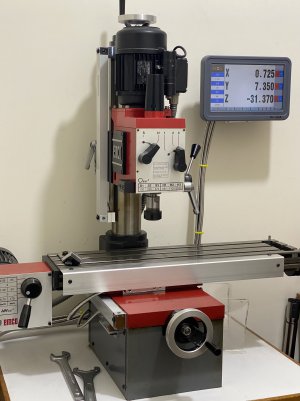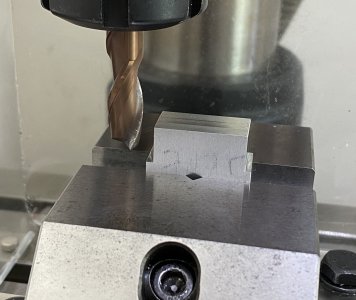After fitting my EMCO FB2 with DRO ( Toauto, Chinese ) and calibrating it with guage blocks, I checked today if the effect of lead screw backlash is eliminated. I cut a vertical slot on a piece of Aluminium plate with a 10 mm carbide end mill. The depth of the finishing cut is 0.1 mm on both sides and the resulting slot is 0.02 mm narrower than that calculated from the DRO readings. Then I tried to cut the plate down to an intended width. The error is also 0.02 mm with the actual being wider. I can only imagine that this is due to the spindle bearing play which imposes an error of 0.01 mm on each side hence 0.02 in total. Any other thoughts ?


Last edited:


